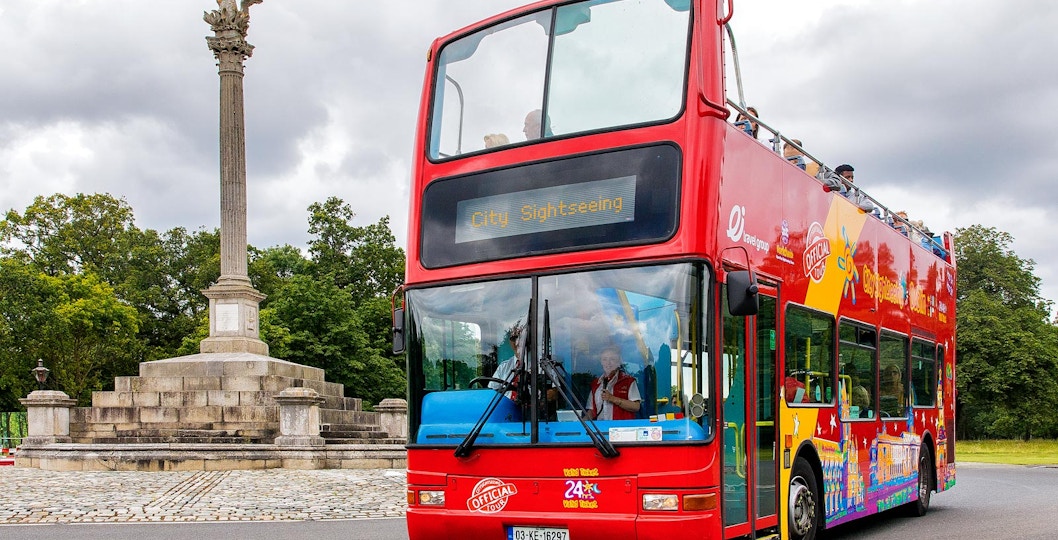Ireland Hop-on Hop-off tours

Top destinations
Plan your visit
Spring (April to June): Mild weather and blossoming landscapes make this an ideal time to explore Ireland's countryside and cities like Dublin and Cork. Fewer tourists ensure a more relaxed sightseeing experience.
Fall (September to October): Cooler temperatures and stunning autumn hues create a picturesque setting for visiting Ireland's historic sites and natural wonders, with smaller crowds enhancing the experience.
Trains: Ireland’s train network, operated by Iarnród Éireann, connects major cities like Dublin, Cork, and Galway. Trains are comfortable and provide scenic routes, making them a pleasant option for traveling between cities.
Buses: The extensive bus network, including services like Bus Éireann and Dublin Bus, covers both urban and rural areas. Buses are reliable and offer an economical way to explore different parts of Ireland.
Trams: Dublin’s LUAS tram system is an efficient way to navigate the city, with two main lines connecting key areas and providing easy access to major attractions.
Ferries: Ferries are a great way to explore Ireland’s islands, such as the Aran Islands or to travel between coastal cities. They offer a scenic and unique experience for visitors.
Irish Stew: A traditional dish made with tender lamb or beef, potatoes, carrots, and onions, simmered slowly to create a hearty and flavorful meal.
Soda Bread: A classic Irish bread made with baking soda instead of yeast, often enjoyed with butter and jam, or served alongside soups and stews.
Boxty: A type of potato pancake that varies by region, Boxty is made with grated and mashed potatoes, giving it a unique texture. It’s often served with sour cream or as a side dish.
Black Pudding: A traditional Irish sausage made from pork, blood, oats, and spices, often served as part of a full Irish breakfast.
Dia duit: Hello.
Slán: Goodbye.
Go raibh maith agat: Thank you.
Le do thoil: Please.
Gabh mo leithscéal: Excuse me.
Frequently asked questions about your Ireland Hop-on Hop-off tour
Hop-on Hop-off tours are a flexible and convenient way to explore Ireland's top attractions. These tours allow you to get on and off the bus at various landmarks, giving you the freedom to explore at your own pace. You'll also get to enjoy guided commentary, which offers insights into the history and culture of each site.
You purchase a ticket for a specific duration (usually 24 or 48 hours). During that time, you can hop on the bus at any designated stop, visit the attractions, and hop back on when you're ready to continue. The buses run on a loop, covering key sights across the city or region.
Key stops typically include iconic locations such as Dublin’s Guinness Storehouse, St. Patrick’s Cathedral, Trinity College, and the vibrant Temple Bar district. Outside of Dublin, popular routes might cover the Cliffs of Moher, the Ring of Kerry, and other scenic spots.
Yes, tickets for these tours can easily be purchased online. It's recommended to book in advance, especially during peak tourist season, to secure your spot and possibly enjoy discounts.
Tickets are generally valid for 24 or 48 hours from the time of first use. This allows you to spread your sightseeing over one or two days, depending on the ticket option you choose.
Yes, in larger cities like Dublin, there are often multiple routes focusing on different areas of the city. Some routes may emphasize historical sites, while others might take you through modern attractions or scenic landscapes.
You can join the tour from any of the designated stops along the route. This makes it easy to start the tour from wherever is most convenient for you.
Yes, most of the buses are equipped with ramps and space for wheelchairs, making them accessible for visitors with mobility issues.
Ireland’s weather can be unpredictable, but many of the Hop-On Hop-Off buses have covered upper decks or fully enclosed lower decks to keep you dry during the tour.
Yes, many tour operators offer discounted rates for children, students, and seniors. It’s best to check the specific terms when booking your tickets online.
